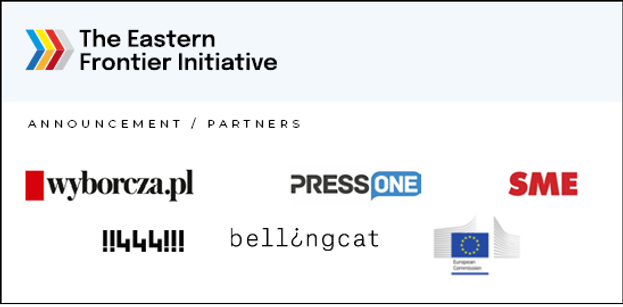When the state-run Statistics Office measured a drop of up to 6 percentage points in support for Smer in a public opinion poll, it not only refused to publish the results, but shortly afterwards stopped the polling altogether.
It happened 16 years ago, under the first government of Robert Fico. Since then, the state-run office stopped publishing public opinion polls - until now. On Friday, the Statistics Office, which is led by former Smer MP Martin Nemky, sent out the results of the first political opinion poll since 2009 to the media through its subordinate organisation Infostat. The poll is authored by the Centre for Social Research, one of Infostat's research teams.
The survey that the media received on February 14 is over two weeks old. The state agency surveyed respondents between January 27 and 31. It therefore only marginally captures Fico's constructs about the involvement of the Georgian National Legion in what he alleged to be a coup prepared in Slovakia, as well as information about protest rallies in Slovakia on January 31. The survey also does not cover the latest round of problems that the Fico-led coalition has been experiencing in the past two weeks, and which resulted in the delay of the regular February parliamentary session due to disagreements in the coalition, the transfer of coalition MP Roman Malatinec from the Hlas party to the National Coalition of Rudolf Huliak, or the diplomatic dispute between Fico and Czech Prime Minister Petr Fiala and the letter from Fico to Elon Musk. Meanwhile, NMS Market Research, a private polling agency, has managed to measure its regular February survey with a later collection of data between February 5 and 9, which already captures most of these events.
The return to political opinion polls is not an independent decision of the Statistics Office and Infostat. It results from the programme statement of the fourth Fico government. The coalition Smer, Hlas and SNS have committed themselves to "setting an objective mirror" to the state of society. "That is why it is appropriate for the State of Democracy in Slovakia report to be published every year of the next parliamentary term," they wrote. The report should also be based on regular surveys during the year.
At the same time, Infostat's surveys should also be published in the form of programmes on public television, according to the government's programme statement approved back in November 2023.
Slovensko movement of former PM Igor Matovič and the SaS party would be left out
Infostat sent a two-page report on the survey to the media, which is a standard way of sharing poll results also by other agencies. In addition to the period of data collection, the state agency wrote in the report that it carried out the poll by means of face-to-face interviews on a sample of 1,098 respondents. When selecting the respondents, Infostat took into account gender, age, education, nationality, region and size of the municipality. No further details on the measurement methodology used were provided by Infostat in the report.
Respondents answered the question: "Imagine if the elections to the National Assembly of the Slovak Republic were held the following Saturday. Which party or movement would you vote for?".
State researchers report that 68.4 percent of the population declared that they would participate in the elections, of which 39.1 percent would definitely participate and the remaining 29.3 percent would probably participate in the parliamentary elections. At the time of the data collection, the winner of the election would have been Progressive Slovakia, which would have been voted for by 24.6 percent of the electorate. Smer would poll second with 22.7 percent of the vote, 1.9 percentage points behind PS. As the third party in the ranking, Hlas achieved 13.7 percent support. According to Infostat, only two other parties - KDH with 8.7 percent of the vote and Republika with 5.2 percent of the vote - would make it into parliament. The Alliance with 4.9 percent of the vote, Igor Matovič's Slovakia movement with 3.9 percent of the vote and the Democrats, who were measured by the state at 3.9 percent, would not cross the five percent threshold. According to the poll, the last three parties with support above one percent of voters are SaS, which would be voted for by 3.2 percent of voters, SNS with 3.1 percent of the vote, and lastly Sme rodina, which appeals to 1.7 percent of voters.
Questions yet to be answered
The survey report does not provide direct contact to any of the survey researchers, nor the names of the researchers, only a general email contact to Infostat and the agency's landline number. It is also not clear who was the survey done for. The SME daily called the Infostat hotline to find out more about the survey methodology. The employee of the state institution asked to send questions to Infostat director Petr Nemec by e-mail.
The results of the Infostat survey differ significantly from the measurements of other established agencies, especially in the case of the measured popularity of SaS. The measured value of 3.2 percent is the lowest of all surveys and election models by AKO, Focus, NMS Market Research and Ipsos since the 2023 general election. In January, AKO, NMS and Ipsos polling agencies published the results of their polls. According to them, support for SaS ranged from 6.3 percent (Ipsos) to 7 percent (AKO) in January. The decline in support for SaS measured by Infostat is not confirmed by the only February survey released by the NMS agency. According to it, SaS appeals to 6.1 percent of voters.
The Eastern Frontier Initiative
This article was written in the framework of The Eastern Frontier Initiative (TEFI) project. TEFI is a collaboration of independent publishers from Central and Eastern Europe, to foster common thinking and cooperation on European security issues in the region. The project aims to promote knowledge sharing in the European press and contribute to a more resilient European democracy.
Members of the consortium are 444 (Hungary), Gazeta Wyborcza (Poland), SME (Slovakia), PressOne (Romania), and Bellingcat (The Netherlands).The TEFI project is co-financed by the European Union.
Views and opinions expressed are however those of the author(s) only and do not necessarily reflect those of the European Union or the European Education and Culture Executive Agency (EACEA). Neither the European Union nor EACEA can be held responsible for them.



